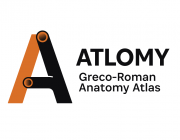Atlas
The design of our Atlas is based on a rigorous and documented User Research, led by our product manager, who has been part of the team from day one. We began with a group of ‘alpha users’ from the field of ancient medicine and philosophy. This allowed us to identify the key needs and preferences of potential users and to prioritise the most important features for the first, beta version of the Atlas. We launched it in October 2021.
Forthcoming Features: In summer 2023 we completed a second and wider User Research. We are now working to develop and deploy new features based on the feedback we received. New viewing and filtering options for lexical and textual references will be available in winter 2024. Later in the year we will launch our Version 2 with advanced comparison possibilities and more. Stay tuned…
Available models currently cover Aristotle (Gastrointestinal, Respiratory, Heart and Vascular System) and some Hippocratic treatises (Heart and Sacred Disease - vascular system and related parts). We are working on further Aristotelian models (reproductive, urinary and skeletal systems), Galen (hand and voice organs) and Celsus (skeleton and viscera).
There are also ca. 700 lexical entries (lemma pages).
Below is a quick guide on how and what you can do on the atlas.
How to use Atlomy
ATLOMY is a lexicon and a 3D atlas of ancient anatomy. You can choose how to approach the content:
Searching for terms
As a lexicon, Atlomy is organised around terms. Specifically: words (Lemmata) which appear in ancient sources. Each term has a unique page with textual and visual descriptions.
There are thousands of unique words, in a myriad of languages and forms.
Fortunately, Atlomy provides an easy search feature: Simply enter a word in the search box.
Try words such as:
- heart / kardia / καρδία
- vessel / vein / phleps / φλέψ / عِرْق
- nose / rhis / ῥίς
- epiglottis / epiglōttis / ἐπιγλωττίς
- uvula / staphulophoros / σταφυλοφόρος
- artery / artēria / ἀρτηρία
As you type, Atlomy will suggest terms. Click on one of the suggestions to directly go to that Term’s page.
If it didn’t suggest what you were looking for, or if you want to view all of the results, click the “Search” button (or press the “Enter” key). Atlomy will fetch and show you a complete list of terms that are relevant to your search query.
![]() Tip: You can sort the results in different ways. You can also use filters to show only the terms that fit into one or more categories. Try the sort and filter options at the top of the page.
Tip: You can sort the results in different ways. You can also use filters to show only the terms that fit into one or more categories. Try the sort and filter options at the top of the page.
Browsing models
You may prefer to start with a model rather than a word. We’ve highlighted a few models on the home page. Click on a model to go to the 3D viewer.
More models are available when searching for terms. On the results page, thumbnail images of relevant models appear under each entry. Click on an image to go directly to the model.
Tip: When viewing a model, click on the little “i” icon next to the model name. This will take you to our “Model Info” page, where you can read about the parts, references and research behind the model.
3D viewer
Step into the Atlas and use it to explore the model and to learn about Aristotle’s ideas of the anatomy of the heart and about his anatomical terminology. You might recognise some terms!
View from all angles:
Use the icons or your mouse:
![]() Rotate (or: Left-click + Drag)
Rotate (or: Left-click + Drag)
Zoom in/out (or: Scroll Wheel)
Pan (or: Right-click + Drag)
Reset button: Resets the view
Dig deeper
Left-click on an organ: show details
Right-click on an organ: options menu (e.g. hide a part)


